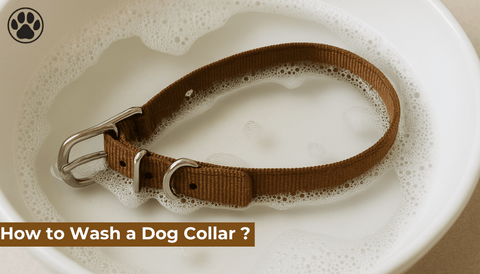
Are Bully Sticks Safe for Dogs?
of reading - words
Bully sticks have become a popular treat among dog owners, praised for their natural ingredients and dental benefits. But as with any pet product, it’s essential to evaluate whether bully sticks are truly safe for your furry friend. This article explores the benefits, potential risks, and best practices for offering bully sticks to your dog, helping you make an informed decision.
What Are Bully Sticks?
Bully sticks are chew treats made from the dried, cooked, or smoked pizzle (penis) of a bull or steer. They are a single-ingredient product, free from artificial additives, making them an attractive choice for pet owners seeking natural treats. Bully sticks are available in various shapes, sizes, and flavors to cater to different dog breeds and chewing habits.
The Benefits of Bully Sticks for Dogs
1. Dental Health
Chewing bully sticks helps reduce plaque and tartar buildup on your dog’s teeth. The mechanical action of chewing promotes healthy gums and can freshen your dog’s breath.
2. High Protein Content
Bully sticks are an excellent source of protein, which supports muscle development and overall health. They are also low in carbohydrates, making them a suitable treat for dogs with specific dietary needs.
3. Long-Lasting Entertainment
Dogs love to chew, and bully sticks provide a satisfying outlet for this natural behavior. They can keep your dog engaged and mentally stimulated, reducing boredom and destructive tendencies.
4. Easily Digestible
Compared to other chews like rawhide, bully sticks are more easily digestible. They break down naturally in your dog’s stomach, reducing the risk of digestive blockages.
Potential Risks of Bully Sticks
1. Caloric Content
Bully sticks are calorie-dense. Overfeeding can contribute to weight gain, especially in smaller or less active dogs. Always account for the calories from bully sticks when planning your dog’s diet.
2. Choking Hazard
As dogs chew bully sticks, they may break into smaller pieces that could pose a choking risk. Supervision is essential, especially for aggressive chewers or smaller dogs.
3. Bacterial Contamination
Bully sticks are natural products, which means they can carry bacteria like Salmonella or E. coli. Purchasing from reputable brands and following proper storage guidelines minimizes this risk.
4. Digestive Sensitivities
Some dogs may experience digestive upset after consuming bully sticks, especially if they are introduced suddenly or consumed in large quantities.
5. Odor
Bully sticks can have a strong odor, which some pet owners find unpleasant. Opting for odor-free versions can help mitigate this issue.
How to Choose Safe Bully Sticks
When selecting bully sticks for your dog, consider the following tips to ensure safety and quality:
1. Check the Source
Choose bully sticks from reputable brands that use high-quality ingredients. Look for products made from grass-fed, free-range cattle and sourced from countries with strict food safety standards.
2. Opt for the Right Size
Select a bully stick size and thickness that matches your dog’s breed, age, and chewing habits. Larger breeds or aggressive chewers may require thicker sticks to avoid splintering.
3. Inspect the Packaging
Ensure the packaging is intact and includes clear information about the product’s origin, ingredients, and safety certifications.
4. Consider Your Dog’s Health
If your dog has specific health concerns, such as weight issues or allergies, consult your veterinarian before introducing bully sticks into their diet.
Best Practices for Offering Bully Sticks
To maximize the benefits and minimize risks, follow these best practices when giving your dog a bully stick:
-
Supervise Chewing: Always monitor your dog while they chew to prevent choking or ingestion of large pieces.
-
Limit Frequency: Offer bully sticks as an occasional treat rather than a daily snack to prevent overconsumption of calories.
-
Discard Small Pieces: Remove and discard the bully stick when it becomes small enough to pose a choking hazard.
-
Store Properly: Keep bully sticks in a cool, dry place and use airtight containers to prevent bacterial growth.
-
Introduce Gradually: Start with small portions if your dog is new to bully sticks to gauge their tolerance.
Are Bully Sticks Safe for Puppies?
Bully sticks are generally safe for puppies, provided they are given the appropriate size and under supervision. Puppies have sensitive digestive systems, so introduce the treat gradually and monitor for any adverse reactions. Always select a stick designed for small breeds or young dogs.
Alternatives to Bully Sticks
If you’re unsure about giving your dog bully sticks, consider these alternatives:
-
Dental Chews: Specially formulated to promote oral health.
-
Raw Bones: Ensure they are appropriately sized and sourced safely.
-
Rubber Chew Toys: Durable and reusable, ideal for dogs with strong chewing habits.
-
Vegetable-Based Chews: Suitable for dogs with protein allergies or sensitivities.
Frequently Asked Questions (FAQ)
1. Are bully sticks safe for all dogs? Yes, bully sticks are safe for most dogs, but they should be introduced gradually and given under supervision. Consult your veterinarian if your dog has specific health concerns.
2. How often should I give my dog a bully stick? Offer bully sticks as an occasional treat, such as once or twice a week, to prevent overfeeding and maintain a balanced diet.
3. Can bully sticks cause diarrhea? Yes, some dogs may experience digestive upset if they consume too much or are new to bully sticks. Introduce them gradually and monitor your dog’s reaction.
4. Are odor-free bully sticks safe? Odor-free bully sticks are safe as long as they come from reputable brands. The odor-free process does not compromise the nutritional value or safety.
5. What should I do if my dog swallows a large piece of a bully stick? Contact your veterinarian immediately if your dog swallows a large piece. They may require an examination to ensure there are no blockages or complications.




